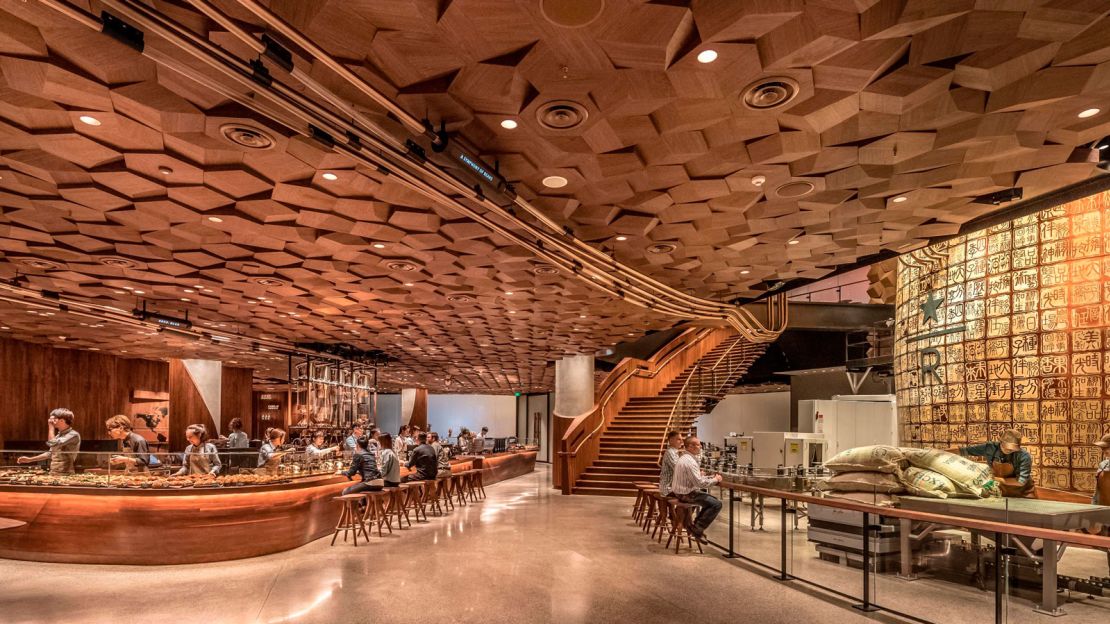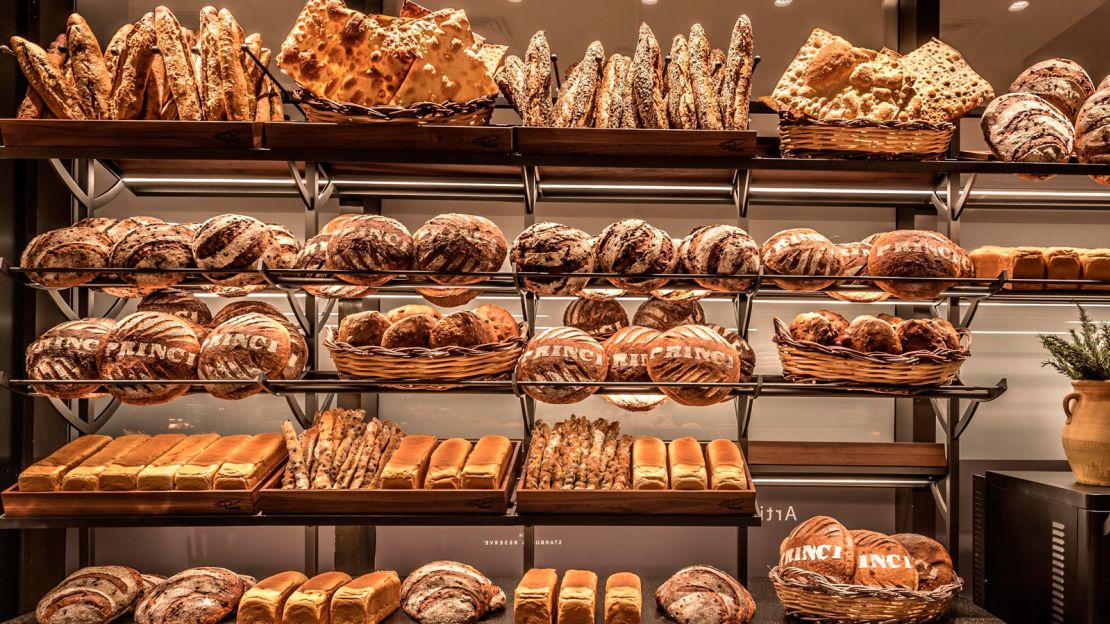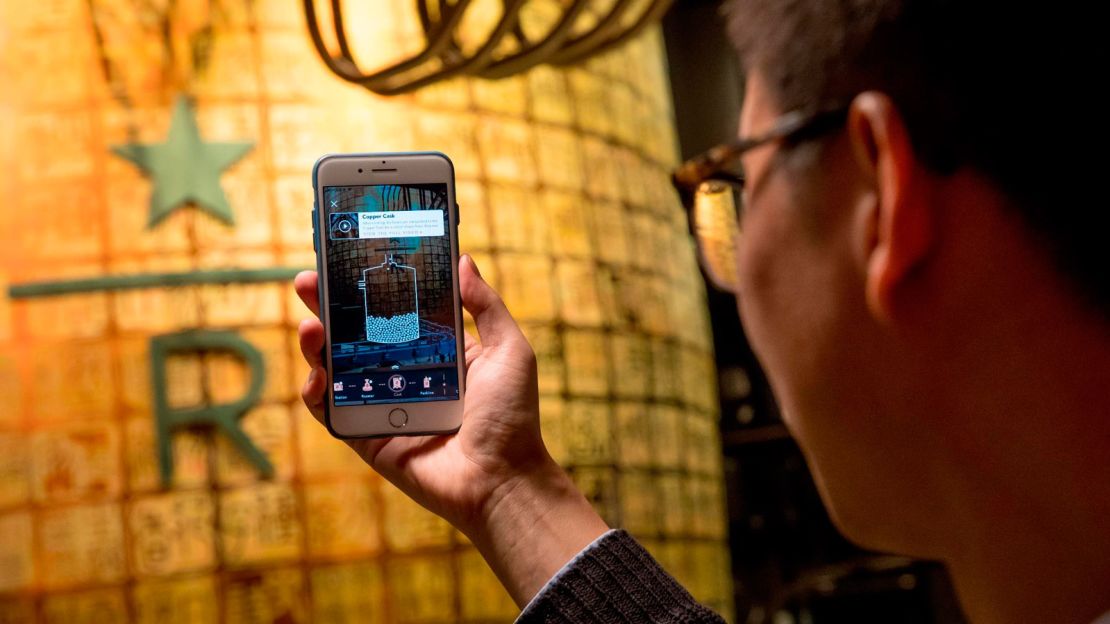With more than 600 Starbucks stores already in Shanghai, there’s hardly a shortage of options to get your grande latte fix in China’s biggest city. But the new Starbucks Reserve Roastery promises a coffee experience with few equals.
So what’s it like?
Occupying a jaw-dropping 30,000 square feet, the game-changing destination in the Shanghai’s swanky Taikoo Hui development is the largest Starbucks in the world, and more than twice as big as the only other Reserve Roastery in the coffee shop company’s hometown of Seattle.
Dubbed the “first fully immersive coffee wonderland in China,” it’s something of a caffeine-fueled Disneyland.
In fact, the multimillion dollar building actually looks like a giant coffee bean when viewed from the sky.
Coffee wonderland

Once you get behind its enormous thick wooden doors, which are curved like a roasted coffee bean, there are two floors of theatrical, interactive entertainment.
While it may not quite be the “magic carpet ride” one senior executive enthusiastically described it as, it’s certainly not your neighborhood store either.
When customers walk in they are even given an “exploration guide,” which doubles as a map.
As the sounds of Luciano Pavarotti’s “Nessun Dorma” play in the background, the sheer scale of the place becomes apparent.
There’s a two-story, four-ton copper cask where freshly-roasted coffee beans are stored and more than 1,000 traditional Chinese “chops” or stamps which tell the story of Starbucks.
The ceiling is covered in 10,000 handmade tiles made from American walnut, that are hexagonal in shape and apparently inspired by the locking of an espresso shot on an espresso machine.
If you’ve ever wondered what “symphony pipes” are, then wonder no more. The coils of long copper pipes criss-cross the ceiling, carrying the beans from the copper cask to the main coffee bar.
As well as the new lingo, customers should prepare themselves for some new flavors.
Maybe you fancy a smoked butterscotch latte – or an espresso suspended above a chilled vanilla bean breve, known as an Undertow?
There’s a “pairing bar,” which focuses on how coffee complements food. And, if caffeine doesn’t quite do it for you, China’s first Starbucks Teavana bar, which is made from 3D printed recycled materials and serves nitrogen-infused teas, is located upstairs.
Unlike many Starbucks sites, Shanghai’s Reserve Roastery sells beer and wine, including a craft beer made from Kenya, Colombia and Guatemala coffees.
In-store artisanal bakery

Food is on the menu too of course, and the selection is way above the usual offerings thanks to Italian baker Rocco Princi, a Milan-based maestro who Starbucks Executive Chairman Howard Schultz personally persuaded to come on board.
Princi first opened his artisanal bakery in Milan in 1986 and has made his reputation on using exceptional ingredients with traditional techniques.
At the Shanghai site, two huge black cast iron ovens churn out more than 80 different freshly baked products a day from focaccia sandwiches with real deal Parma ham and Italian mozzarella, to sinful desserts.
The chocolate chunk with almond cookies look especially tempting – but at 38RMB, or $5.75 each – they should be.
The affable Italian explains that, whenever you order hot food, you can guarantee it will be fresh from the oven.
Trays of temptation sit everywhere, filled with Italian-style croissant called cornetti, breads studded with olives, tomatoes and fresh herbs and even a gourmet take on cinnamon rolls.
Starbucks say the store’s maximum capacity will run between 1,000 to 1,200 customers at a time, some of them sitting on the 500 or so chairs available.
However these are no ordinary chairs. The specially designed, beautifully finished pieces were handmade by Chinese craftsmen and will eventually be available to purchase.
There’s also a coffee library and the option of three “tasting journeys” to highlight the roastery’s food and beverage offerings. The handcrafted long bar, one of three on site, is aptly-named, as at 88 foot it’s the world’s longest coffee bar.
Augmented reality

Of course, no new store in China would be complete without the integration of state-of-the-art technology.
The first Starbucks augmented reality (AR) experience is available, either through the Roastery app or on Alibaba’s Taobao app.
Point your phone at different features and you’ll get a “bean-to-cup story.”
The app has a digital menu as well as details on the huge, borderline bewildering, range of brewing methods that include the Cold Brew Tower, Modbar Pour-Over and Siphon.
Customers even receive virtual badges for each step, which can be shared on social media.
Belinda Wong, the CEO of Starbucks China, explains that Starbucks Reserve Roastery isn’t just a store but “carries the dreams of 40,000 partners,” in other words their China-based employees.
With a new Starbucks store opening in China every 15 hours – setting the country well on the path to surpass the US total number of stores within a decade – it’s clear that those dreams are going to keep growing at an extraordinary rate.
As far as other global openings for the Starbucks Reserve Roastery, New York, Milan and Tokyo are under construction, and Shanghai will eventually succumb to the planned store in Chicago which is due to cover a mind-blowing 45,000 square feet.









